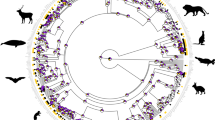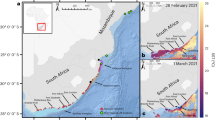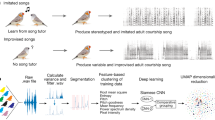Abstract
The pelvis of Pungitius pungitius (ninespine stickleback) is normally a robust, bilaterally symmetrical structure with stout spines. In some populations it is reduced in size, sometimes to complete absence. The first sign of reduction is loss of the spines, which is accompanied by a reduction in the size of the pelvic bones (vestiges) and an increase in bilateral asymmetry. Further reduction in the size of the vestiges leads to their eventual loss. In a pelvis-reduced population the propensity to spine asymmetry is highly heritable (h2 = 0.85 ± 0.14) but asymmetry of the bony vestiges in fish without spines is not heritable. The absence of spines is heritable, as is size of the bony vestiges (h2 = 0.49 ± 0.12). Crosses of spineless fish from a reduced population with spined fish from either of two normal populations produce only spined progeny. The inter-population heritability of pelvis size is h2 = 0.26 ± 0.10, but that of bilateral asymmetry is zero. The expression of spines and vestiges is influenced relatively little by variation in pH, calcium, and salinity. We propose a polygenic model of inheritance with two phenotypic thresholds, the upper for the presence of spines and the lower for complete absence of the pelvis. Canalization breaks down between the thresholds. This genetic system probably predates divergence of the stickleback genera. We discuss its relevance to understanding the dynamics of pelvis reduction in extant and fossil stickleback populations.
Similar content being viewed by others
Article PDF
References
Allendorf, F W, and Leary, R F. 1986. Heterozygosity and fitness in natural populations of animals. In: Soulé, M. E. (ed.) Conservation Biology The Science of Scarcity and Diversity, Sinauer Assoc. Inc., Sunderland. MA.
Bell, M A. 1974. Reduction and loss of the pelvic girdle in Gasterosteus (Pisces): A case of parallel evolution. Natural History Museum, Los Angeles Country, Contributions to Science, 257, 1–36.
Bell, M A. 1984. Evolutionary phenetics and genetics: the threespine stickleback, Gasterosteus aculeatus, and related species. In: Turner, B. J. (ed.) Evolutionary Genetics of Fishes, Plenum Press, New York.
Bell, M A. 1987. Interacting evolutionary constraints in pelvic reduction of threespine sticklebacks, Gasterosteus aculeatus (Pisces, Gasterosteidae). Biological Journal of the Linnean Society, 31, 347–382.
Bell, M A. 1988. Stickleback fishes: Bridging the gap between population biology and paleobiology. Trends in Ecology and Evolution, 3, 320–325.
Bell, M A, Francis, R C, and Havens, A C. 1985a. Pelvic reduction and its directional asymmetry in threespine sticklebacks from the Cook Inlet Region, Alaska. Copeia, 1985, 437–444.
Bell, M A, Baumgartner, J V, and Olson, E C. 1985b. Patterns of temporal change in single morphological characters of a Miocene stickleback fish. Paleobiology 11, 258–271.
Campbell, R N. 1979. Sticklebacks [Gasterosteus aculeatus (L.) and Pungitius pungitius (L.)] in the Outer Hebrides, Scotland. Hebridean Naturalist, 3, 8–15.
Coad, B W. 1973. Modifications of the pelvic complex in nine-spine sticklebacks, Pungitius pungitius (L.), of eastern Canada and the Northwest Territories. Naturaliste Canadien, 100, 315–316.
Edge, T A, and Coad, B W. 1983. Reduction of the pelvic skeleton in the threespine stickleback, Gasterosteus aculeatus, in two lakes of Quebec. Canadian Field-Naturalist, 97, 334–336.
Falconer, D S. 1965. The inheritance of liability to certain diseases, estimated from the incidence among relatives. Annals of Human Genetics, 29, 51–76.
Falconer, D S. 1981. Introduction to Quantitative Genetics. 2nd edn, Longman, London.
Giles, N. 1983. The possible role of environmental calcium levels during the evolution of phenotypic diversity in Outer Hebridean populations of the threespine stickleback, Gasterosteus aculeatus. Journal of Zoology London 190, 535–544.
Hagen, D W. 1973. Inheritance of numbers of lateral plates and gill rakers in Gasterosteus aculeatus. Heredity 30, 303–312.
Hoogland, R D, Morris, D, and Tinbergen, N. 1957. The spines of sticklebacks (Gasterosteus and Pungitius) as means of defense against predators (Perca and Esox). Behaviour 10, 205–230.
Lande, R. 1978. Evolutionary mechanisms of limb loss in tetrapods. Evolution, 32, 73–92.
McPhail, J D. 1963. Geographic variation in North American ninespine sticklebacks, Pungitius pungitius. Journal of the Fisheries Research Board of Canada, 20, 27–44.
McPhail, J D. (in press). Speciation and evolution of reproductive isolation in the sticklebacks (Gasterosteus) of southwestern British Columbia. In: Bell, M. A. and Foster, S. (eds). Evolutionary Biology of the Threespine Stickleback, Oxford University Press, Oxford.
Moodie, G E E, and Reimchen, T E. 1973. Endemism and conservation of sticklebacks in the Queen Charlotte Islands. Canadian Field Naturalist, 87, 173–175.
Nelson, J S. 1969. Geographic variation in the brook stickleback, Culaea inconstans, and notes on nomenclature and distribution. Journal of the Fisheries Research Board of Canada, 26, 2431–2447.
Nelson, J S. 1971a. Comparison of the pectoral and pelvic skeletons and some other bones and their phylogenetic implications in the Aulorhynchidae and Gasterosteidae (Pisces). Journal of the Fisheries Research Board of Canada, 28, 427–442.
Nelson, J S. 1971b. Absence of the pelvic complex in nine-spine sticklebacks, Pungitius, collected in Ireland and Wood Buffalo National Park Region, Canada, with notes on meristic variation. Copeia, 1971, 707–717.
Nelson, J S. 1977. Evidence of a genetic basis for absence of the pelvic skeleton in brook stickleback, Culaea inconstans, and notes on the geographical distribution and origin of the loss. Journal of the Fisheries Research Board of Canada, 34, 1314–1320.
Nelson, J S, and Atton, F M. 1971. Geographic and morphological variation in the presence and absence of the pelvic skeleton in the brook stickleback, Culaea inconstans (Kirtland), in Alberta and Saskatchewan. Canadian Journal of Zoology, 49, 343–352.
Palmer, A R, and Strobeck, C. 1986. Fluctuating asymmetry: measurement analysis, patterns. Annual Review of Ecology and Systematics, 17, 391–421.
Reimchen, T E. 1980. Spine deficiency and polymorphism in a population of Gasterosteus aculeatus: an adaptation to predators? Canadian Journal of Zoology, 58, 1232–1244.
Reist, J D. 1980a. Predation upon pelvic phenotypes of brook stickleback, Culaea inconstans, by selected invertebrates. Canadian Journal of Zoology, 58, 1253–1258.
Reist, J D. 1980b. Selective predation upon pelvic phenotypes of brook stickleback Calaea inconstans, by northern pike, Esox lucius. Canadian Journal of Zoology, 58, 1245–1252.
Reist, J D. 1981. Variation in frequencies of pelvic phenotypes of the brook stickleback, Culaea inconstans, in Redwater drainage, Alberta. Canadian Field-Naturalist, 95, 178–182.
Takata, K, and Goto, A. 1985. Pelvic spine deficiency of Pungitius tymensis in Hokkaida. Japanese Journal of Ichthyology, 32, 100–103.
Stephanidis, A. 1971. About some of the fishes of the freshwater of Greece. Biologia Gallo-Hellenica, 3, 213–241.
Wootton, R J. 1976. The Biology of The Sticklebacks. Academic Press, New York.
Wootton, R J. 1984. A Functional Biology of Sticklebacks. Croom Helm, London.
Author information
Authors and Affiliations
Rights and permissions
About this article
Cite this article
Blouw, D., Boyd, G. Inheritance of reduction, loss, and asymmetry of the pelvis in Pungitius pungitius (ninespine stickleback). Heredity 68, 33–42 (1992). https://doi.org/10.1038/hdy.1992.4
Received:
Issue Date:
DOI: https://doi.org/10.1038/hdy.1992.4
Keywords
This article is cited by
-
Morphological and genetic divergence in Swedish postglacial stickleback (Pungitius pungitius) populations
BMC Evolutionary Biology (2011)
-
Morphometric and meristic variation in Galician threespine stickleback populations, northwest Spain
Environmental Biology of Fishes (2005)
-
Heritability of tibia fluctuating asymmetry and developmental instability in the winter moth (Operophtera brumata L.) (Lepidoptera, Geometridae)
Heredity (1999)



